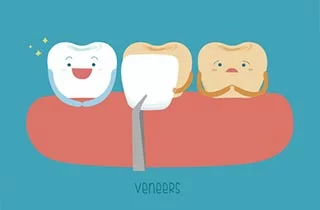FAQ about veneers
Which materials are the porcelain veneers made of?
Veneers are extremely thin all-ceramic shells, made of pure porcelain (lithium disilicate).Veneers have an excellent transparency and therefore look like natural teeth.In addition, the all-ceramic shells are completely free of metals
Who are Emax veneers and Emax crowns suitable for?
- If you have discoloured teeth
- In case of damaged or broken teeth
- When you want to correct irregularly shaped, distorted teeth
- In case of a gap between the teeth
Advantage sof porcelain veneers
- You can achieve a natural effect
- The gums usually tolerate the veneers well
- The porcelain veneers do not discolor
- With porcelain veneers, you can lighten your natural teeth
- The porcelain veneers are nowadays the most suitable solution if you want to change the tooth shape or color – there is no need to grind down a not a lot of tooth substance
Are 4, 6, 10 Veneers enough?
Fixing 4 Veneers is not aesthetic. Rarely 6, usually 8 Veneers are enough for an average mouth per row of teeth, 10 for a wider mouth.
How many Veneers do you need for a full smile?
The perfect smile can be achieved with 20 Veneers (10 at the bottom and 10 at the top), as they completely cover the smile line.
Treatment with veneers does not contribute to aesthetics, as the contour recedes or is disproportionate. In such cases, gingivoplasty is always necessary first. This is how we achieve an aesthetically pleasing result.
Is getting veneers painful?
No, before grinding down, the patient receives a local anesthetic injection
How long do veneers last – are permanent?
The life span of the ceramic shells is 10-15 years, depending on how well ones takes care of them. Since they are made of porcelain, they are extremely durable.




